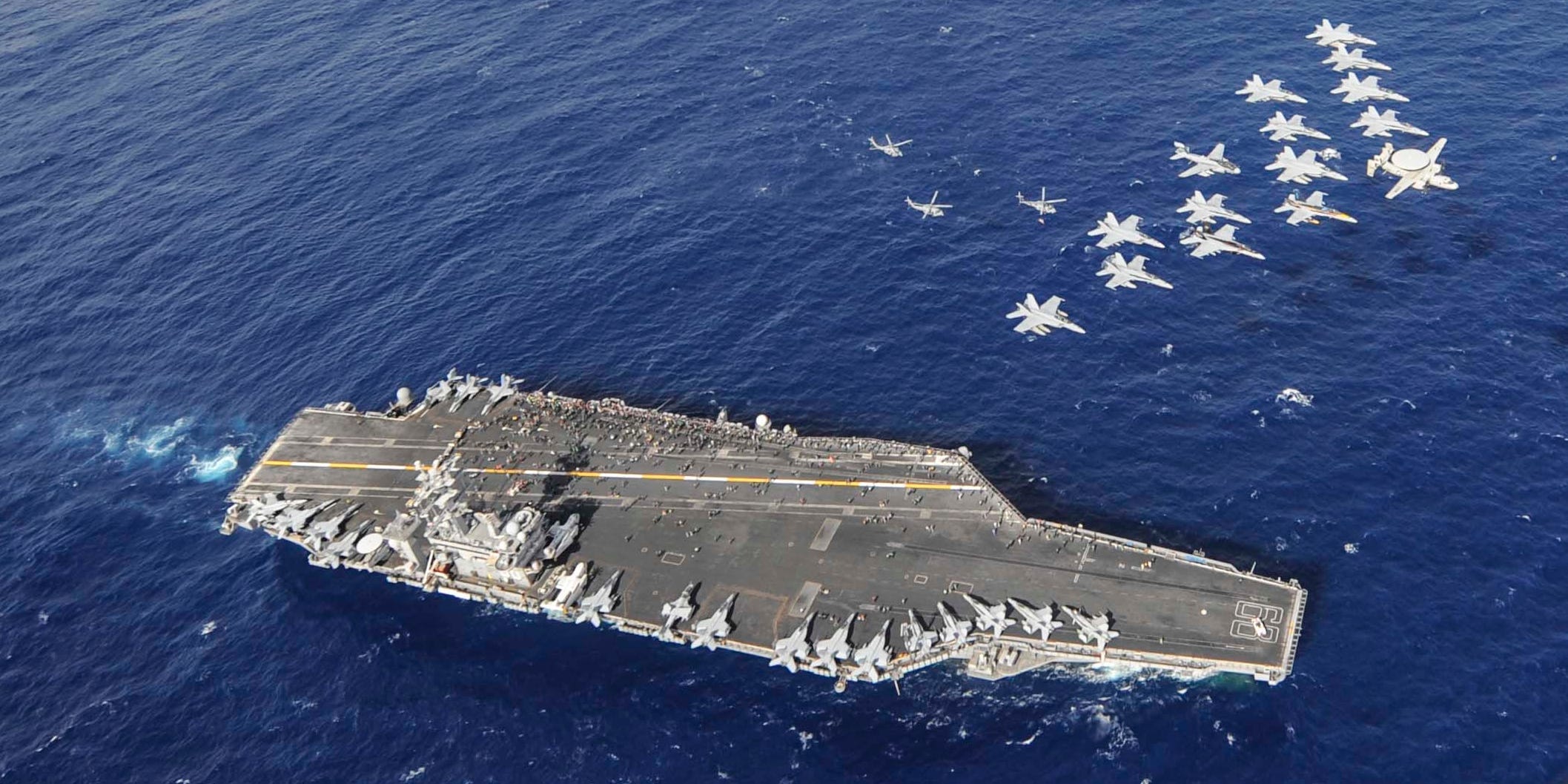
U.S. Navy photo by Mass Communication Specialist Seaman Aiyana S. Paschal/ Released
- USS Nimitz joined the Navy in May 1973. At the time of its commissioning, it was only the second nuclear-powered carrier ever built.
- But over the next five years, Nimitz will be retired, stripped down, and have its reactor removed as the Navy begins to “recycle” the venerable aircraft carrier after a half-century in service.
- Visit Business Insider’s homepage for more stories.
On December 9, the Navy released its 30-year shipbuilding plan. With the ambitious goal of building a 546-ship fleet by 2051, the plan calls for 404 new vessels to be built as 304 are retired.
Fourteen of those 304 vessels are nuclear-powered and will be recycled as part of the Navy’s Ship-Submarine Recycling Program, a unique effort dedicated to the safe disposal of decommissioned nuclear-powered vessels.
The group includes 13 nuclear submarines: 11 Los Angeles-class attack subs and two Ohio-class cruise-missile subs. The final vessel is the venerable USS Nimitz, the lead ship of the Nimitz-class nuclear-powered supercarriers.
Nimitz and the 13 submarines are expected to go through the recycling process over the coming five years. It will be an end to a nearly 50-year career for the Nimitz.
Lead ship of its class
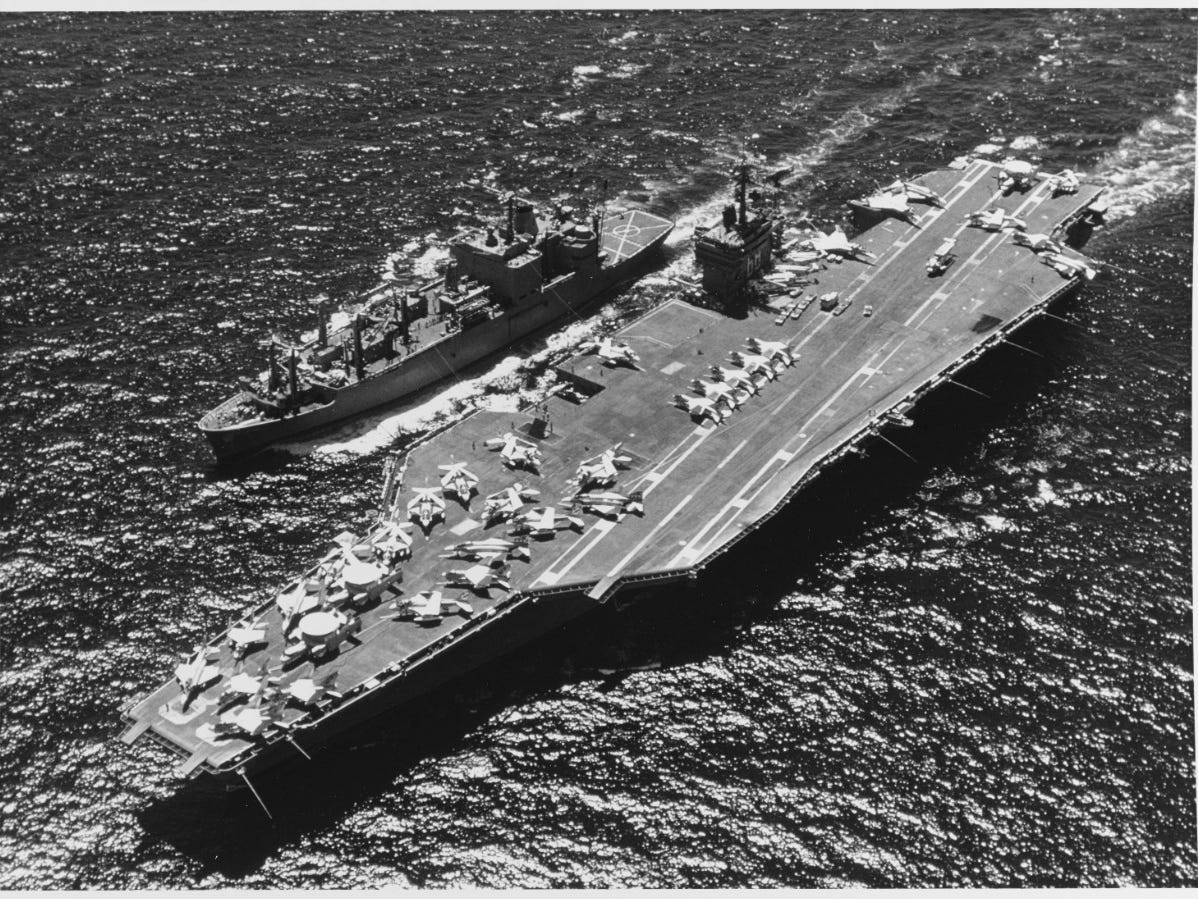
US Navy/National Archives
USS Nimitz was commissioned in May 1973. At the time of its commissioning, it was only the second nuclear-powered carrier ever built, after USS Enterprise.
It was named after Fleet Adm. Chester William Nimitz Sr., the legendary naval commander who was the commander-in-chief of the US Pacific Fleet and the leader of all Allied operations in the Pacific during World War II.
At 1,092 feet long, Nimitz immediately became one of the largest ships in the Navy and the world. It is capable of speeds over 30 knots and carries an air wing of over 60 aircraft and a compliment of about 5,000 sailors and Marines.
Nuclear reactors give carriers a number of advantages. Their range is virtually unlimited, measured by years of operation instead of miles, and the space created by not needing to carry fuel allows them to carry twice as much aircraft fuel and up to 30% more weaponry for the air wing.
The reactors also power high-tech electronics, like radars, and steam-driven catapults, enabling the carrier to launch larger and heavier aircraft.
A long and proud career
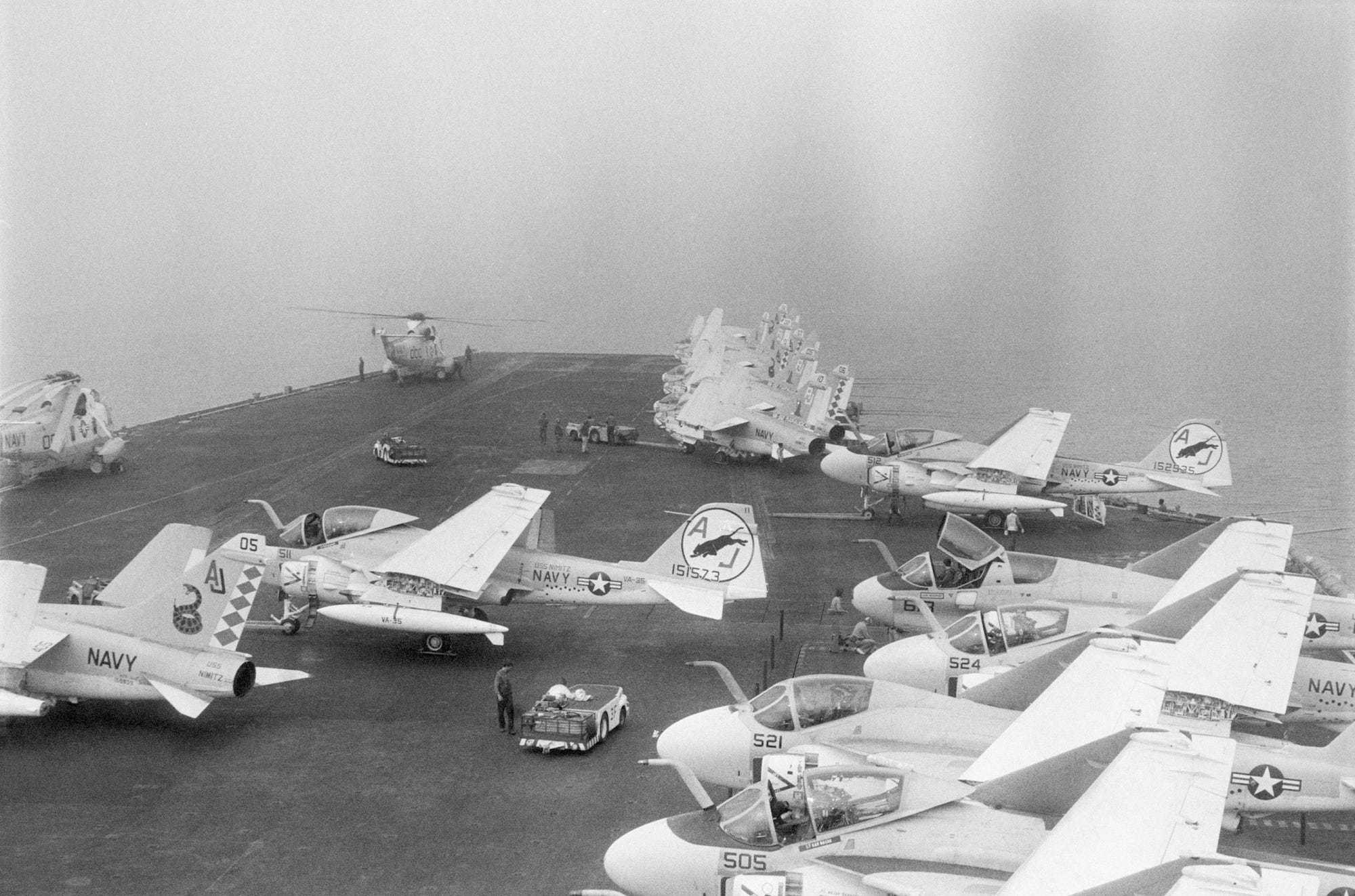
Michel ARTAULT/Gamma-Rapho via Getty Images
USS Nimitz took part in at least seven large-scale military operations for the US Navy and numerous patrols and freedom of navigation exercises.
Nimitz's first deployment was to the Mediterranean in 1976. In 1979, it was sent to the Indian Ocean in response to the Iran hostage crisis. Four months into the deployment, it took part in Operation Evening Light, a small part of Operation Eagle Claw, the failed attempt by US Army Special Forces to rescue US Embassy staff held hostage in Tehran.
In 1981, two of Nimitz's F-14A Tomcats engaged and destroyed two Libyan Su-22s during a freedom-of-navigation exercise in the Gulf of Sidra.
Most of Nimitz's service was in the Middle East. It played an important role in Operation Earnest Will, a US Navy mission to protect Kuwaiti oil tankers in the Persian Gulf from Iranian attacks during the Tanker War of the late 1980s. It was the largest naval convoy operation since World War II.
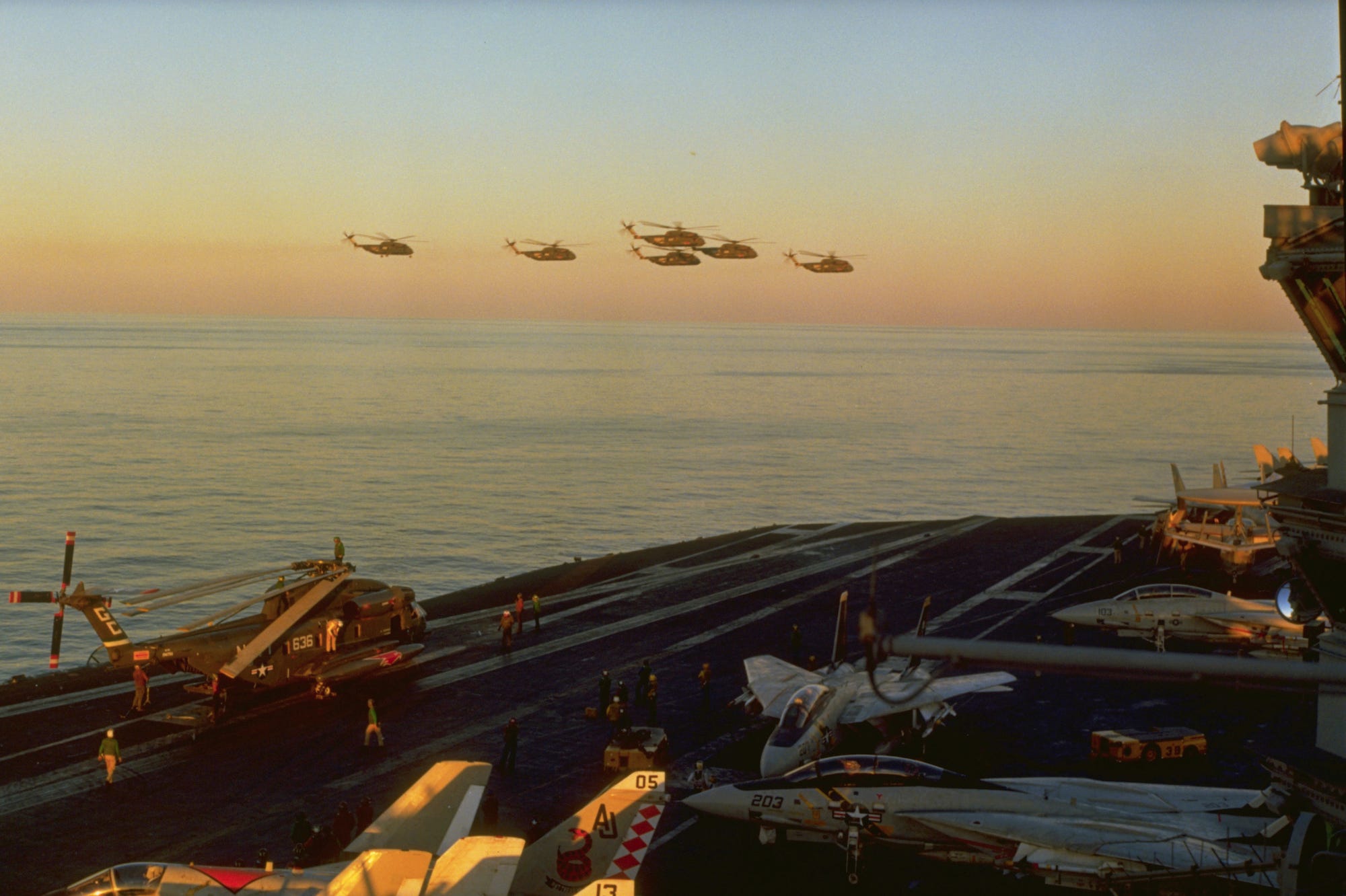
CORBIS/Corbis via Getty Images
Nimitz was also involved in the Third Taiwan Strait Crisis in 1996. Nimitz's carrier group and the amphibious assault ship USS Belleau Wood sailed through the Taiwan Strait while another carrier group, centered on USS Independence, operated nearby. The show of force convinced China to back down from its efforts to intimidate Taiwan.
Nimitz's aircraft flew strike and reconnaissance missions for Operation Desert Storm and Operation Southern Watch in the 1990s. In 2003, it returned to the Persian Gulf, conducting airstrikes in Afghanistan and Iraq for Operations Enduring Freedom and Iraqi Freedom, respectively.
After USS Enterprise was retired in 2012, Nimitz became the oldest aircraft carrier in service.
In 2017, after a brief deployment to the Pacific, Nimitz was again sent to the Persian Gulf to conduct airstrikes on ISIS targets in Iraq during Operation Inherent Resolve. Its air wing flew 1,322 sorties, dropping 904 pieces of ordnance on ISIS targets in just over three months.
Final deployment and recycling
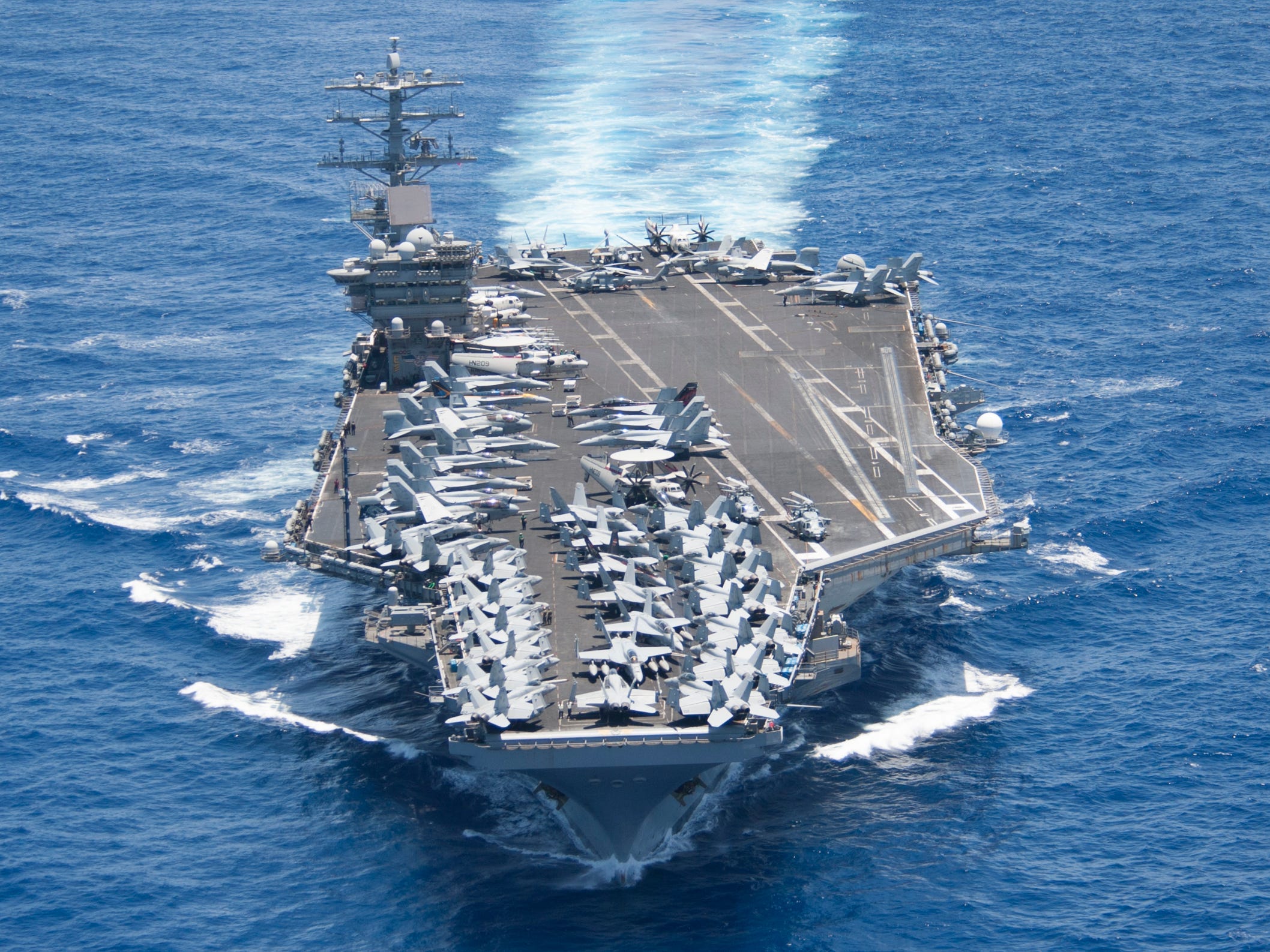
In April 2020, Nimitz was operating in the Pacific when a small number of its crew contracted the coronavirus, leading to a nearly month-long quarantine in Bremerton, Washington, before the carrier deployed to the South China Sea with the carrier USS Ronald Reagan.
After assisting US troops in Somalia, Nimitz was set to return home in December, but was abruptly ordered to stay in the Middle East as a deterrent ahead of the one-year anniversary of the US assassination of Iranian Maj. Gen. Qasem Soleimani. By February 1, when the carrier was ordered to return home, it had been deployed for 240 days.
Nimitz is expected to be retired around 2022 and start the recycling process in 2025. The process involves at least three phases: inactivation, reactor compartment disposal, and recycling.
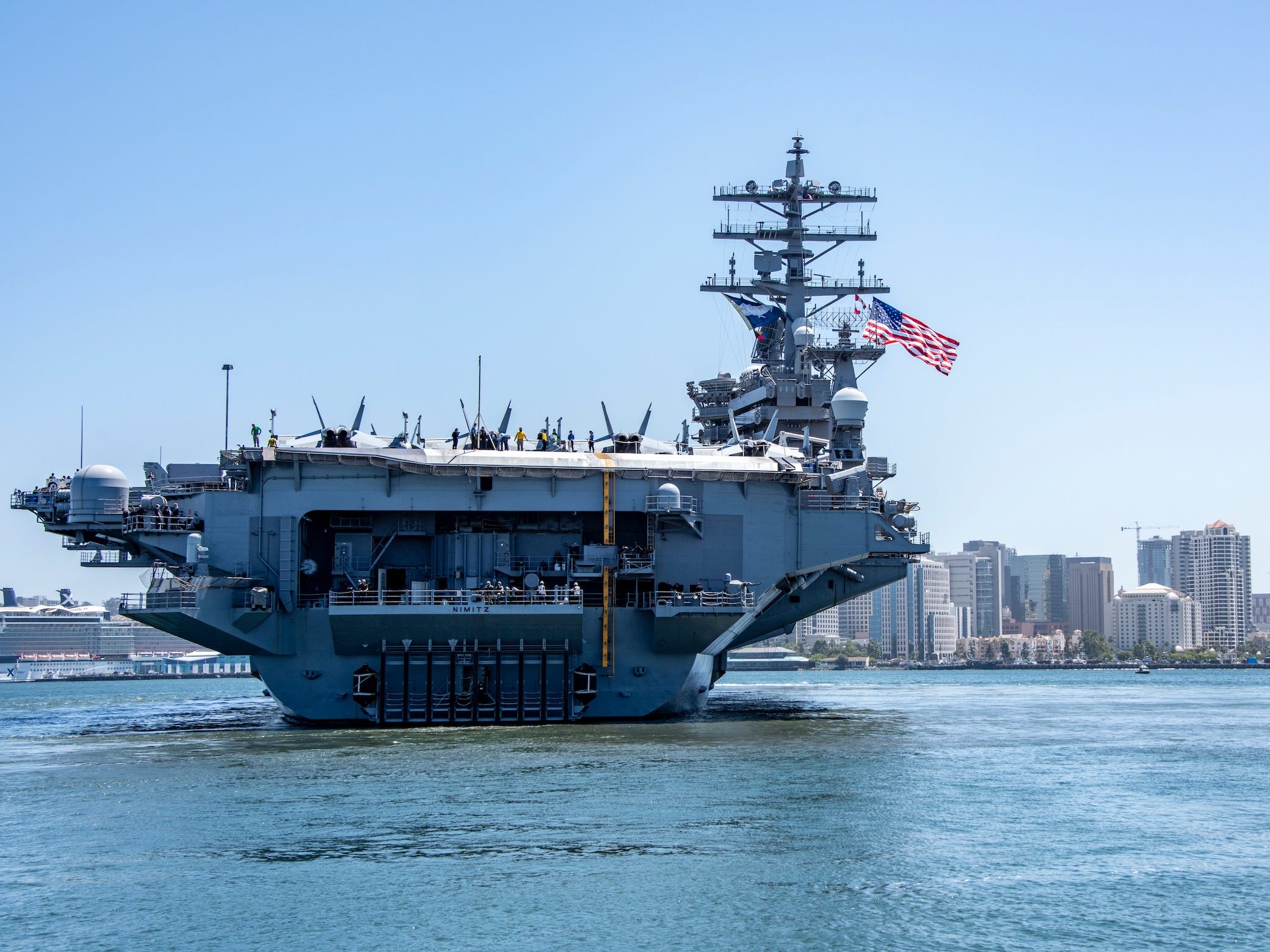
US Navy/MCS 2nd Class Natalie M. Byers
The inactivation period - which comes after the carrier has largely been stripped of equipment and components - sees the two nuclear reactors completely de-fueled. The fuel is moved to a shielded transfer container, which is then put into a specially designed shipping container and then sent to the Naval Reactors Facility in Idaho.
During reactor compartment disposal, the reactors themselves are thoroughly cleaned, sealed, and removed. They will then be sent to the Department of Energy's Hanford waste disposal site in eastern Washington.
Once these steps are completed, any remaining parts from Nimitz that can be used on other carriers are removed and prepared for usage. Parts of the USS Enterprise - currently in the recycling process itself - have already found their way onto some Nimitz-class carriers.
After that, the Nimitz will be completely scrapped. Enterprise's recycling process - the first for a nuclear-powered carrier - could take as long as 15 years, and Nimitz's will likely take just as long.